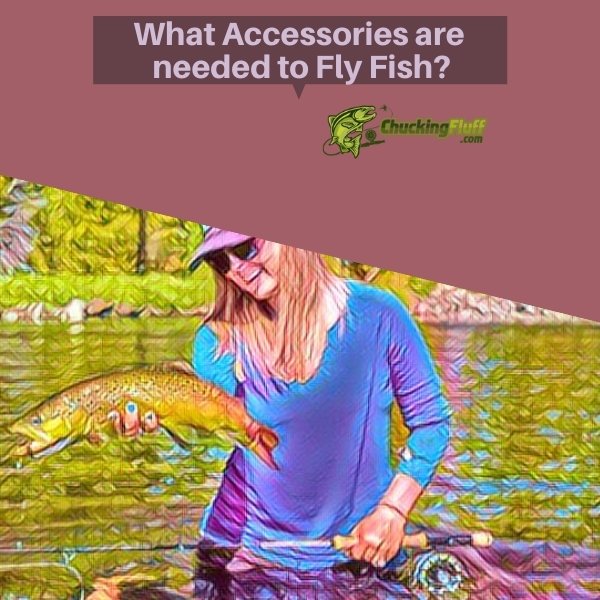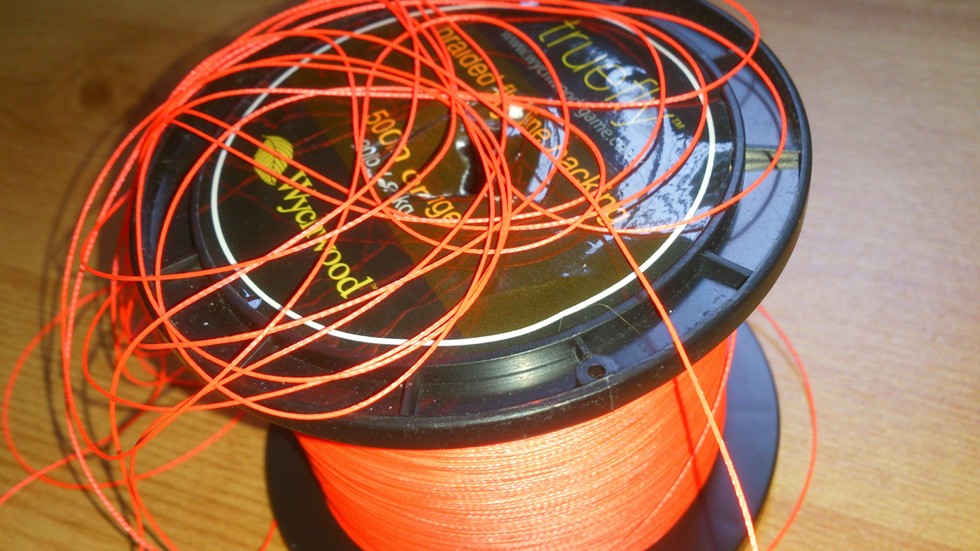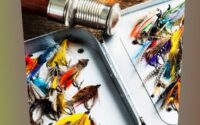| Disclosure: Just to be open and honest the buttons and links you click on in the website will in most cases take you to another website where you can purchase the products I am reviewing. As an Amazon Associate I earn from qualifying purchases. |
What Accessories are needed to Fly Fish? A Beginners Guide
 Rookies at fly fishing can be pardoned for being overwhelmed by the amount of tackle and gear available to buy.
Rookies at fly fishing can be pardoned for being overwhelmed by the amount of tackle and gear available to buy.
Shopping for basics like fly rods or fly rod combos is an entire task that can be daunting without proper guidance and research.
Thousands of mouse clicks across hundreds of websites might still have them purchasing the wrong basics.
Novices and a few amateurs are almost uninterested in buying more fly angling gear after getting complete rod outfits that work for them.
To aid these buddies to negotiate what can be the bewildering maze of angling stuff available, I have put together a simple guide to essential accessories any fly angler should have.
Prepping this guide in alphabetical order can create a mini anglers’ dictionary, which isn’t my intention.
I know there is so much stuff in the accessory bracket that an angler can have – some that I have read about, seen but not used before, but today’s focus is on the ESSENTIALS!
Must I buy everything as a beginner?
Not at once!
When it comes to fly fishing, my advice is to invest in quality and not numbers.
I know a bunch of buddies who are hoarders of cheap polarized sunglasses, sun hats almost falling apart, and crap that should have been disposed of decades ago.
While there are a few you can do without in the beginning, especially when using a new fly fishing combo, there are others that can make you have a lousy to terrible time fishing – even worse, not fish at all.
Basic Fly Fishing Accessories
Fly Fishing Nets
It is challenging to land larger fish than a tiny panfish without a fishing net.
Imagine tagging into an averagely-sized Northern Pike without a fishing net.
Landing it will be impossible, and in desperate struggles to beach that buddy, your tippet snaps and the fish happily swims away.
A net is mandatory for catch-and-release fishing as you can easily land the fish, remove the hook and release it into the water.
Get a light, medium-sized high-quality net since you will be wearing it when you are casting.
Magnetic Net Release Holder
A magnetic net release holder is used to attach the fly fishing net to your fly fishing vest.
The magnet will exert about 12 pounds of force and secure the net while making it easier to detach when you grab it to land fish.
Without a holder, an angler struggles to grab their net.
Fly Dressing/Fly Floatant
A fly dressing helps keep a fly buoyant, and for dry flies, they remain floating on the water’s surface.
The dry flies become slightly waterlogged after use without the dressing and won’t float properly.
Flies that don’t float well will definitely be ignored by trout.
Use the dressing on a completely dry fly.
Spray or apply it to the fly and allow sometime before use.
Polarized Sunglasses
Polarized sunglasses cut through glare, and for fly angling, they allow you to see through the water glare clearly.
There are more benefits of having polarized sunglasses, and I have a whole guide on the site that you can check out.
On most occasions, if fishing without one, you are probably fishing blind.
Sunglasses are considered personal items, and you can spend as much as you want on whichever style of design you fancy.
However, for fly angling, the stylish and trendy types aren’t needed, and sometimes the cheapest polarized options could still work well and cut through the glare.
You want a pair with scratch-resistant lenses because wayward branches or flies will strike them sooner than later.
The primary thing is to prevent eye and lens damage.
Durability is another primary factor as you will squish them into pockets five or ten times a day, bang them around and occasionally drop and ignore them.
Fishing Hat
Summer calls for hats, and fly anglers aren’t exempted from the heat and light protection even if they will be on the water.
Fishing hats prevent heatstroke and sunburn, allowing your polarized sunglasses to work better.
This doesn’t need to be fancy or costly.
There are numerous designs in the market that you can choose from depending on your style.
Some crucial aspects to consider, though, are the fit and performance.
Don’t forget they also protect your head from a stray cast and the possibility of embedding a hook in it.
Leader Straightener
Leader straighteners are built to keep the leaders of fly fishing rigs straight.
A fisherman/woman draws the leader through the straightener, and as friction generates heat, it allows the leader {likely bent from the effects of storage) to straighten.
Straight leaders are vital for successful angling, and these tools are inexpensive to buy.
Fishing Clippers/Nippers
Fishing nippers almost resemble toenail clippers (basically, the name is fancy) and are for cleanly cutting excess tippet material from when attaching flies to tippets.
It doesn’t mean that getting toenail clippers will work well when fly fishing.
Fishing nippers give cleaner cuts and easily cut through tippet material.
Save your teeth from biting tippet and get some nippers.
Fly Line Dressing
Fly line dressing cleans the fly line and keeps your lines slick.
Slicker lines allow you to cast easily and smoothly pick up off the water when backcasting.
If you will be dry fly fishing, this is necessary to maintain and preserve your line.
Strike Indicators
Strike indicators are mainly used when fishing nymphs.
During nymph fishing, the nymphs disappear below the water surface, making it difficult to see (even if you have the best-polarized sunglasses on).
Hence strike indicators are attached a distance from the fly but on the leader.
Instead of an angler watching the fly as it is done in dry fly fishing, they watch and study the strike indicator.
When the strike indicator makes a sudden move, the fish has struck a fly and you should immediately set the hook.
Non-immediate Accessories
I wouldn’t term this section below as accessories to avoid; instead, those beginners shouldn’t buy straight out of the gate unless there are unique scenarios peculiar to them.
You can get them if you have been in the sport for a few months now.
Fishing Rod Racks – Rod racks are mainly used at home – in the garage or basement to store fishing poles.
I find rod tubes that come with the fly rods working pretty well, in fact, better since they protect against dust and accidental damage.
While the rod racks look fantastic, they aren’t an absolute need.
Waist Pack – Guides and anglers who carry a lot of stuff to the water might need this, but a high-grade fly fishing vest is the best starting point for novices.
Packable Trash Container – Large Ziploc bags work well too and smell better.
Entomology Kit – This is awesome if you are an advanced fly angler to help identify bugs.
But as a novice? Forget it for the first few months.
Wading Boot Cleats – Unless you are using handed down or second-hand boots or are in rip-roaring faster currents or in conditions that need cleats, you have no business buying them immediately.
General Wading Staff – Will you be fishing in fast-moving waters?
If you are, these are mandatory, but if you are casting in ponds and creeks with easier waters, save some more for a higher-quality set for when the wading time comes.
Fly Tying Stuff – Some anglers get anxious and feel like they need everything involved in fly fishing, including fly tying.
It is ideal to focus on learning how to cast and the basics of fly fishing when starting.
Later, you can worry about fly tying.
Bug Nets – You need an excellent net but at least not for bugs at the start.
Landing Gloves – Trout handling doesn’t need you to have gloves just make sure your hands are wet; get them when you are ready to chase fish with teeth.
Streamside Thermometer – You will eventually need one; however, save it for a later date.
Stripping Basket – Unless you plan to make hundreds of foot casts, starters don’t need other things hanging on the shoulders.
Headlamp – Though a necessity for night anglers and those who cast on days with poor visibility, learn to fish when it is bright first.
Forceps – These are a debate, but for your first angling days, when the main focus is on learning how to catch trout, you can do without it.
Bring them if you will be fishing species with teeth.
Wrap Up
Fly fishing is a fascinating sport, and for beginners, anxiety could hit and get you on a shopping spree to get everything a fly angler could ever need.
Save that money for the best combos and reels when you have improved your skills.
There are 70+ accessories for fly fishing.
Some are essential and mandatory from the first day of casting, while you might never get to use others.
Likewise, others can be improvised and substituted unless you are the perfect type of guy that needs the required tool for a job.
From my compilation, the first items to get if you can’t get all the listed are polarized sunglasses, fishing net and nippers, then the rest as you go up the list.
Note that items in the ‘Not-Immediate’ list come later after you have mastered the basics of fly fishing.
Overall, prioritize the essentials first!
Last update on 2025-04-18 / Affiliate links / Images from Amazon Product Advertising API
This product presentation was made with AAWP plugin.


